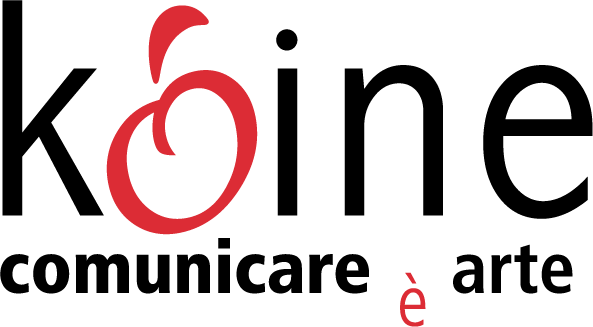Aldo spoldi
Having gravitated toward conceptual art and theatrical experimentation in the 1970s, Aldo Spoldi belongs to a generation of artists who sought to overcome the rigidity of conceptualism by returning to a language capable of new narration. He draws freely from art history, everyday imagery, and contemporary culture. His distinctive trait lies in his refusal to confine himself to the dimension of the “painting,” instead creating large-scale installations and drawing on a universe of imagery rooted in childhood, cartoons, and comics, to give life to imaginative and delicately stylized icons.
Aldo Spoldi was born in Crema in 1950, where he lives and works. He studied at the Beato Angelico Art High School and at the Brera Academy of Fine Arts in Milan.
An ironic, playful, and theatrical artist, he is a painter, sculptor, musician, writer, professor at the Brera Academy, a member of the Collège de ’Pataphysique since 1983, and a signatory of the Topist Manifesto (2014).
The evolution of his work parallels the transformation of both art and society, each reflecting the changes of the other throughout different phases of his career.
In 1968 — the year of youth protests and rampant Marxism — he gathered a group of high school friends to stage burlesque performances in public spaces of various cities, later collected in the catalog Ben venga maggio, published by Galleria Diagramma/Luciano Inga Pin in 1972.
In 1977, the year marking the decline of Marxism and the rise of postmodernism, he founded the Teatro di Oklahoma, which exhibited at Galleria Diagramma/Luciano Inga Pin in Milan. The project offered an ironic critique of Body Art, presenting it as a still life, dressed in Elio Fiorucci clothing and displayed in large black-and-white photographic panels by Giorgio Colombo, based on Spoldi’s sketches.
Soon after, alongside the Transavanguardia movement, Spoldi began his painting career, marked by theatrical imagery that stood in contrast to conceptual rigor.
He was invited to join the “Nuovi Nuovi” movement by Renato Barilli and the “Magico-Primario” group by Flavio Caroli. He exhibited in Milan in 1978 with Luciano Inga Pin and Enzo Cannaviello, in both Rome and Milan; in 1981 at Studio Marconi, the Hayward Gallery in London, the Paris Biennale, and Galerie Daniel Templon (which invited him back in 1985); in 1982 at the Venice Biennale; and in 1983 at Holly Solomon Gallery in New York.
In 1985, during the years of financial immateriality, Spoldi transformed the humanistic Teatro di Oklahoma into the Banca di Oklahoma, later becoming an LLC and eventually BdO Ltd., a capital company based in Lugano with the artist as president and CEO. The company’s purpose was to turn its business operations into a work of art. Spoldi presented the BdO first at the Stedelijk Museum in Amsterdam, and later in Business Art–Art Business, an exhibition curated by Frans Haks and Loredana Parmesani at the Groninger Museum in 1993.
He composed two operas in the form of “singing sculptures”: Enrico il Verde (1987), staged at the Rotonda della Besana in Milan, at Giuliano Gori’s Celle Art Space, with music by Elio e le Storie Tese, and at the Franco Agostino Teatro Festival in Crema; and Capitan Fracassa (1989), performed at the invitation of the L. Pecci Museum in Prato.
In 1994, he created one of his most important works for Marconi: Il museo degli umoristi (The Museum of Humorists), a project for a new kind of museum and an attempt to “overturn Duchamp.” In 1996, in the era of European unification and the rise of the internet, he developed a pedagogical project through BdO Spa, creating several virtual characters (the artist Cristina Show, the photographer Met Levi, the philosopher Andrea Bortolon, and the critic Angelo Spettacoli), who became the protagonists of exhibitions in Milan at Care/of (2000), the Ambrosetti Foundation (2003), and the Paris Biennale (2006).
He published several books — Lezioni di educazione estetica, Cristina Show, frammenti di vita, and Lezioni di filosofia morale — later presented at the Ambrosetti Foundation and at the Cittadellarte – Fondazione Pistoletto in Biella.
In 2007, amid the global financial crisis and a renewed search for concreteness, he envisioned the creation of the Accademia dello Scivolo, which he presented in Milan at the Brera Academy of Fine Arts, in 2011 at the Marconi Foundation, and in 2012 at Giuliano Gori’s Fattoria di Celle. He also published philosopher Andrea Bortolon’s book Un Dio non può farsi male (A God Cannot Be Hurt).
Meanwhile, he continued painting in collaboration with the Marconi Foundation, organizing exhibitions curated by Sandro Parmiggiani: Operette morali (2002), followed by La tromba delle scale (2006), Il mondo nuovo (2011), and the design of the quadro-camper commissioned by the Accademia dello Scivolo.
Among the main group exhibitions, we recall Italian Sculpture of the 21st Century at the Arnaldo Pomodoro Foundation (2005); Orlando Furioso: Enchantments, Passions and Madness. Contemporary Art Reads Ariosto, at Palazzo Magnani, Reggio Emilia (2014); and Alfabeta 1979–1988, at the Galleria Civica di Modena (2017).
Among his more recent solo exhibitions are The Banca di Oklahoma by Aldo Spoldi 1988–1994 at the Museo Civico di Crema e del Cremasco (2016), and Aldo Spoldi. The History of the World at the Marconi Foundation (2018).
Aldo Spoldi lives and works in Crema.
